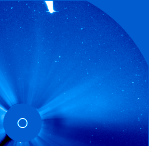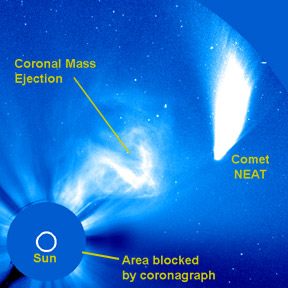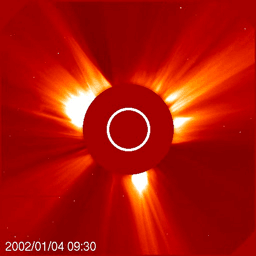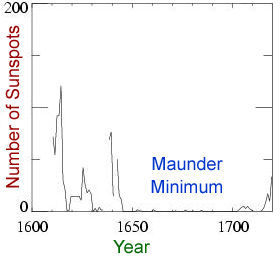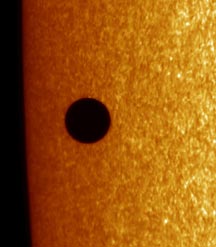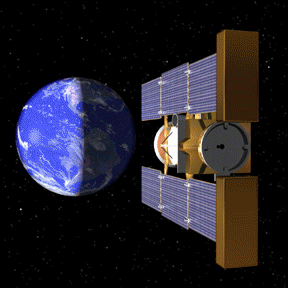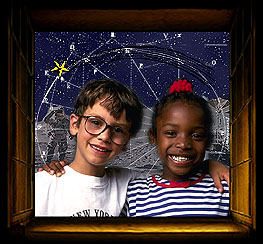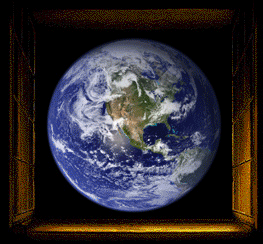
Images & Multimedia
Here you will find links to all sorts of pictures, animations, videos, sounds, and interactive multimedia that are on Windows to the Universe
- Explore collections of images in the Image Galleries.
- Watch and listen to Animations, Video & Audio.
- Learn in an active way with Interactive Multimedia Activities.
- Check out the latest podcasts, videos, and interactive multimedia from the National Science Foundation.
You need special software or hardware to view some of these items. Does your computer have the software and hardware it needs to access these items? To find out, click here.
Image Galleries
Animations, Video & Audio
- Earth
- Amphibians Around the World are Dying (Flash and QuickTime movies)
- Animation of Annual Variation in Sea Ice Extent in the Northern Hemisphere (527 KB QuickTime movie)
- Animation of Annual Variation in Sea Ice Extent in the Southern Hemisphere (484 KB QuickTime movie)
- Beaufort Scale of Wind Speeds (Flash and QuickTime movies)
- Break Water - MP3 audio podcast from NSF
- Buggles - MP3 audio podcast from NSF
- Building a Climate Model Grid (Flash and QuickTime movies)
- Cafe Latte Batte - MP3 audio podcast from NSF
- Collateral Damage - MP3 audio podcast from NSF
- Deep Voices - MP3 audio podcast from NSF
- Degrees of Survival - MP3 audio podcast from NSF
- Designing Earthquake-resistant Buildings (Flash and QuickTime movies)
- Evolution Revolution - MP3 audio podcast from NSF
- Exploring Ocean Dead Zones (Flash and QuickTime movies)
- Eye Screen - MP3 audio podcast from NSF
- Distant Whaletive - MP3 audio podcast from NSF
- Evolution Hits the Beach - streaming RealVideo (1 min. 7 sec.) from NSF
- Flight Path - MP3 audio podcast from NSF
- Fragrant Violation - MP3 audio podcast from NSF
- Frogantuan - MP3 audio podcast from NSF
- Galapagos Islands flyover animation (MPEG)
- Gasoline Plant - MP3 audio podcast from NSF
- Genetics of Self-Sacrifice - streaming RealVideo (1 min. 19 sec.) from NSF
- Geoclimate: Probing Earth's Deep-Time Climate Archives - streaming RealVideo (23 min. 14 sec.) from NSF
- Global Atmospheric Circulation Model (Flash and QuickTime movies)
- Going, Going Guam - MP3 audio podcast from NSF
- Got Mica? - MP3 audio podcast from NSF
- The History of Early Polar Exploration - streaming RealVideo (11 min. 48 sec.) from NSF
- Loving Environment - MP3 audio podcast from NSF
- Making Earthquakes... Indoors - streaming RealVideo (1 min. 6 sec.) from NSF
- Multi-Faceted - MP3 audio podcast from NSF
- Nature's Strongest Glue? - streaming RealVideo (51 sec.) from NSF
- Night Moves - MP3 audio podcast from NSF
- Reef Savers - MP3 audio podcast from NSF
- Reusing Forests - streaming RealVideo (53 sec.) from NSF
- Rotating Earth globe - large (1.4 MB) and small (238 KB) QuickTime versions and large (542 KB) AVI version
- Rotating Earth globe with exaggerated topography (MPEG)
- Sugar Rush - MP3 audio podcast from NSF
- Teaching Robots to Swim - streaming RealVideo (1 min. 26 sec.) from NSF
- Tropical Hunch - MP3 audio podcast from NSF
- Tropical Punch - MP3 audio podcast from NSF
- Physics
- Aphelion & Perihelion of an Orbit (Flash)
- Einstein's Messengers - LIGO Documentary - streaming RealVideo (20 min. 12 sec.) from NSF
- Elliptical Orbits (small 15K GIF | large 27K GIF)
- Infrared - More Than Your Eyes Can See (38 MB QuickTime movie)
- Orbital Eccentricity (small 15K GIF | large 29K GIF)
- Solar System
- Aphelion & Perihelion of an Orbit (Flash)
- Comet Kudo-Fujikawa near Sun on January 29, 2003 (small 820K GIF | large 3.7M GIF | News Story)
- Comet NEAT near Sun in February 2003 (645K GIF animation | News Story)
- Computer Model of a Coronal Mass Ejection (CME) - from the Sun to Earth (Flash and QuickTime movies)
- Coronal Mass Ejection (CME) emitted by the Sun in January 2002 (small 316K GIF | large 1M GIF)
- Elliptical Orbits (small 15K GIF | large 27K GIF)
- Graph of Sunspot Counts (810K animated GIF)
- Journey Beneath a Sunspot (Flash and QuickTime movies)
- Magnetic Field Lines Tangle as Sun Rotates (Flash and QuickTime movies)
- Mercury Transit on May 7, 2003 (small 327K GIF | large 2.2M GIF | News Story)
- Modeling Sunspots with Supercomputers (Flash and QuickTime movies)
- Orbital Eccentricity (small 15K GIF | large 29K GIF)
- Rotating Mars globe (animated GIF | MPEG movie)
- Rotating Sun with Sunspots (234K QuickTime video)
- Stardust spacecraft returns comet samples to Earth (small 266K GIF | large 613K GIF)
- Stormy Weather on the Sun? - streaming RealVideo (58 sec.) from NSF
- Space Missions
- The Eagle Has Landed (QuickTime video)
- Neil Armstrong's "One small step..." statement on the Moon (audio) (Apollo 11 page)
- New Horizons mission to Pluto - launch video (5.5 MB MPEG)
- New Horizons mission to Pluto - animation illustrating the entire mission (6.4 MB QuickTime movie)
- New Horizons mission to Pluto - animation showing the trajectory (path through the Solar System) of the spacecraft (4.7 MB QuickTime movie)
- President Kennedy's Man on the Moon Speech (audio)
- Stardust spacecraft returns comet samples to Earth (small 266K GIF | large 613K GIF)
- The Universe
- Einstein's Messengers - LIGO Documentary - streaming RealVideo (20 min. 12 sec.) from NSF
- The History of the Universe in 60 Seconds or Less - Dr. Eric Schulman - streaming RealVideo (1 min. 16 sec.) from NSF
- Star Wars: Where Science Meets Imagination - streaming RealVideo (1 min. 46 sec.) from NSF
- Systematic Search - MP3 audio podcast from NSF
Interactive Multimedia
- Astronomy
- Earth
- Carbon Cycle Game (Flash)
- Climate of the Southeast Pacific (Flash)
- Clouds in Art (Flash)
- Compare Images of Arctic Sea Ice Extent Side-by-side
- Compare Images of Antarctic Sea Ice Extent Side-by-side
- Earth's Magnetic Field (Flash)
- Earth's North Magnetic Pole (Flash)
- Seafloor Spreading and Magnetic Field Reversals (Flash)
- Space Junk
- Physics
- Bar Magnet and Compass (Flash)
- Disk Magnet and Compass (Flash)
- Elliptical orbits (Flash)
- A Matter of Scale (Flash)
- Solar System
Software and Hardware Needed to Access These Features
You need special software or hardware to view some types of multimedia files. Your computer must have a sound card and speakers or headphones if you want to listen to audio clips or videos that include audio. Animated GIF files do not require any special software or plugins, so you should be able to view those without trouble with a standard web browser such as Internet Explorer, Netscape, or Safari. Many multimedia files (including animated GIFs) are large, and may take a long time to download if you do not have a fast Internet connection.
Some animations and videos are presented as QuickTime files. Click here to see whether you have an up-to-date version of QuickTime, and to get the most recent version if you do not.
Some animations and interactive multimedia activities are presented as Flash files. Most browsers include Flash when they are installed on your computer, but you may need to upgrade to the latest version of the free Flash player. Click here to see whether you have the latest version of Flash, and to get the newest version if you do not.
Some animations and videos are presented as MPEG files. Go to our Plugins Page to get the software needed to view those if you don't already have it.





